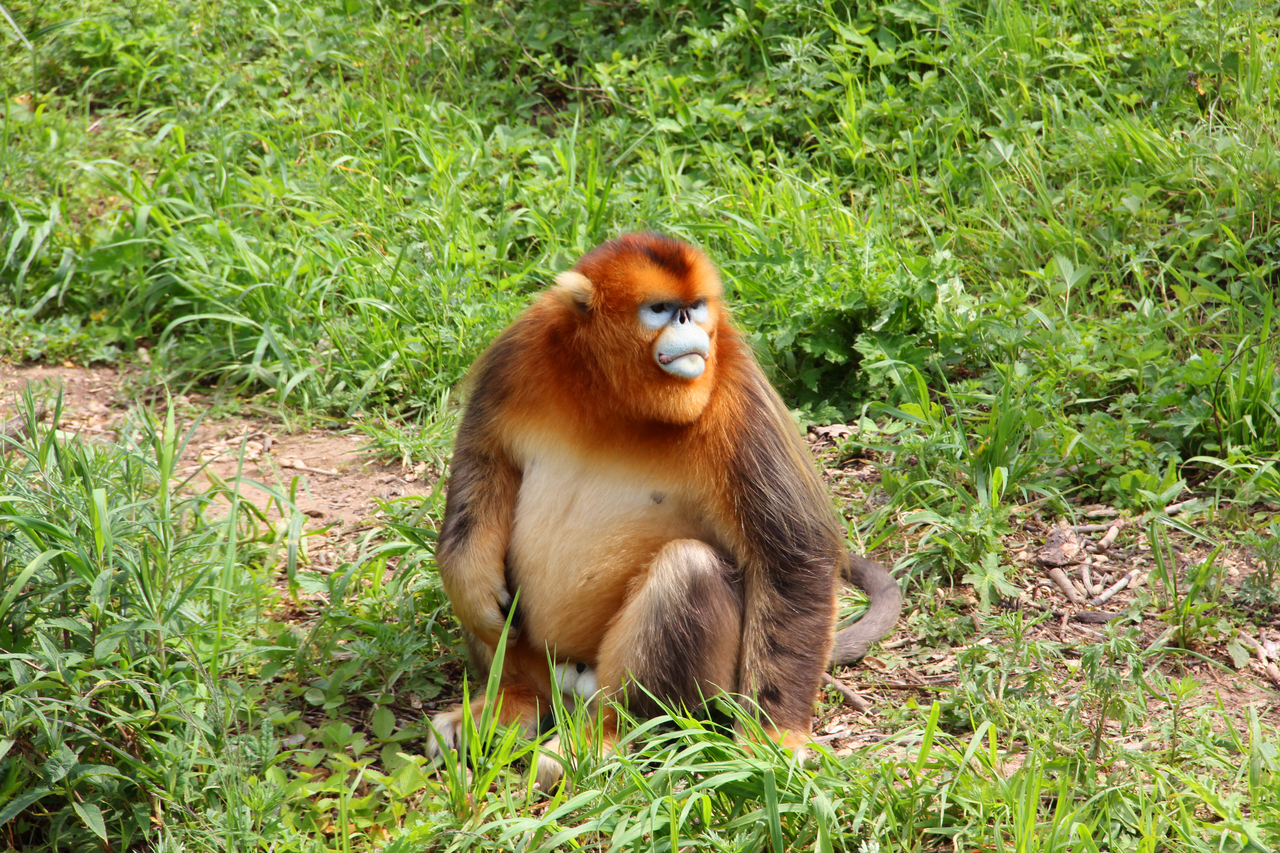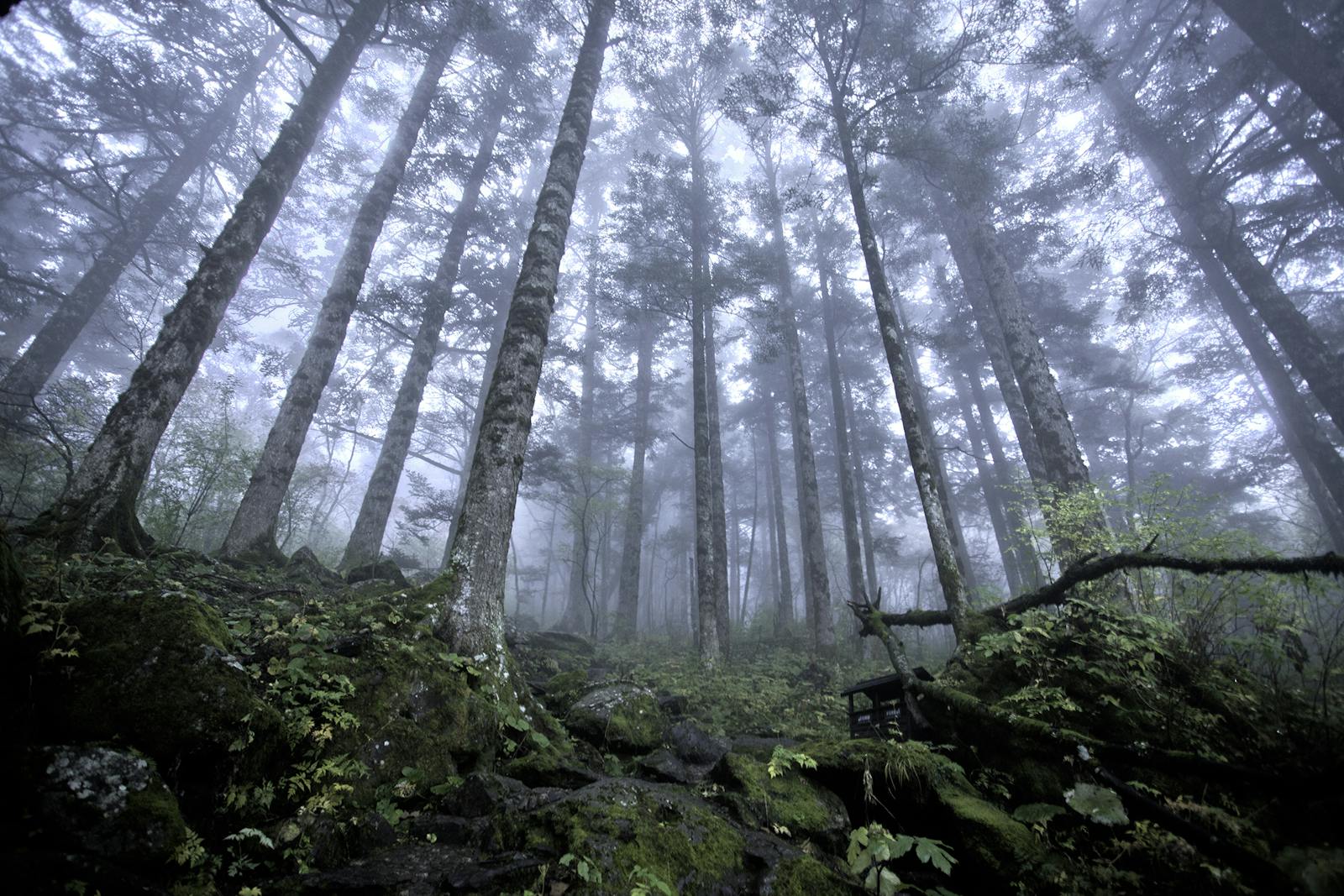Daba Mountains Evergreen Forests
The ecoregion’s land area is provided in units of 1,000 hectares. The protection goal is the Global Safety Net (GSN1) area for the given ecoregion. The protection level indicates the percentage of the GSN goal that is currently protected on a scale of 0-10. N/A means data is not available at this time.
Bioregion: Sichuan Basin & Central Mountain Forests (PA51)
Realm: Eastern Eurasia
Ecoregion Size (1000 ha):
16,868
Ecoregion ID:
659
Protection Goal:
12%
Protection Level:
7
States: China
The Daba Mountains have the most extensive primary forests remaining in central China. This ecoregion provides critical habitats that support not only an exceptionally rich diversity of flora and fauna, but also entire populations of numerous charismatic but highly endangered species, including the Hubei golden snub-nosed monkey and the crested ibis.
When southern China collided with Asia in the time of the dinosaurs, parallel bands of folded mountains, the Daba range, arose north of the Yangtze River, isolating the Sichuan Basin from the plains of eastern China. The eastward jutting mountain system that includes the Daba range forms a watershed divide—and a climatic and biogeographic border—between subtropical forests to the south and warm temperate forests to the north. Situated on the warm, southern side of this barrier, the Daba Mountains Evergreen Forests shelter cold-sensitive species from frigid temperatures that strike northern China in winter.
_1_wikipedia.jpg)
The flagship species of the Daba Mountains Evergreen Forests ecoregion is the Hubei golden snub-nosed monkey. Image credit: Dave Giovanni, Creative Commons
Plant species richness here exceeds that of any other deciduous broadleaf forest type worldwide: more than 850 woody plant species in more than 250 genera. Curiously, endemic species here tend to be those older, genetically distinctive taxa that found refuge from Ice Age climate stressors, rather than swarms of closely related taxa that evolved recently, as is the case for many Himalayan plant genera. On this basis, the Daba Mountains are regarded as a “paradigmatic example of a species museum.”
32 of the 2600 vascular plant species native to Shennongjia Reserve are under national protection. Protected trees include Thuja sutchuenensis, a cedar-like conifer with exquisitely scented wood that was collected here 1899, later thought extinct, then re-discovered on nearby inaccessible slopes a hundred years later. The conifer Taiwania flousiana, and two flowering tree species—Davidiana involucrata (dove tree) and Tetracentron sinense—also survive in the Daba Mountains as ‘refugees’ from cold dry conditions that affected regions farther north during the Pleistocene Ice Ages.
Metasequoia, the winter-deciduous dawn redwood, dominated polar forests 52 million years ago and was thought long extinct until a relic population was discovered near the southern margin of this ecoregion in the 1940s.5 It is now understood that more extensive dawn redwood stands were extirpated from the Daba Mountains during the Pleistocene, much as the closely related Sequoia redwood lost habitat in the mountains of California at this time.
More than 600 vertebrate species are recorded in the Shennongjia Nature Reserve, including 87 mammal species and 389 birds, an exceptional richness for this biome. Besides the golden monkeys, IUCN Red Listed rare and vulnerable animals include clouded leopard, dhole, Chinese goral, Reeve’s pheasant, and the critically endangered, 1.2 m long Chinese giant salamander, which is found in greater numbers here than anywhere else on Earth.

Hubei golden snub-nosed monkeys. Image credit: Creative Commons
In its higher elevations (1,500–3,400 m), the Shennongjia Nature Reserve supports the entire wild population of the endangered hubeiensis subspecies of golden snub-nosed monkey, currently at 1,550 individuals and increasing under strict government protection. Like the other snub-nosed leaf monkeys, these beautifully colored animals endure heavy winter snow, huddling together in arboreal nests to withstand temperatures colder than any other non-human primate can tolerate. For many hours each day, these monkeys browse foliose lichens of the forest canopy because this low energy food source is their primary means of sustenance in a cold, upland habitat, especially during winter months.
Yangxian County, at the northern margin of the ecoregion, supports the only known, naturally occurring population of crested ibis. This bird species recovered from near extinction in 1981 when the population dropped to seven individuals; today the Yangxian population consists of 270 birds. Adult plumage is snowy white, but the crested ibis applies secreted oils to color its head and neck grey for the breeding season.
While the higher elevation areas in the Daba Mountains Evergreen Forests ecoregion have large tracts of intact habitat, the lower elevation areas in proximity to human population centers are more likely to be fragmented, degraded by human disturbance and vulnerable to encroachment. Of particular concern is a national highway corridor that passes through the Shennongjia Reserve.
Priority conservation actions for the next decade are to: 1) educate local stakeholders to conserve wildlife; 2) implement conservation connectivity via wildlife corridors, wildlife road crossings, and fence removal6; and 3) manage increasing tourism with appropriate infrastructure development.
Citations
- Carpenter, C. 2000. Eastern Asia: Eastern China. https://www.worldwildlife.org/ecoregions/pa0417https://www.worldwildlife.org/ecoregions/pa0417
- López-Pujol, J., Zhang, F.M., Sun, H.Q., Ying, T.S., Ge, S. 2011. Mountains of Southern China as “plant museums” and “plant cradles”: evolutionary and conservation insights. Mountain Research and Development 31(3): 261-9.
- UNESCO World Heritage Nomination – IUCN Technical Evaluation, Hubei Shennongjia (China) – ID 1509



